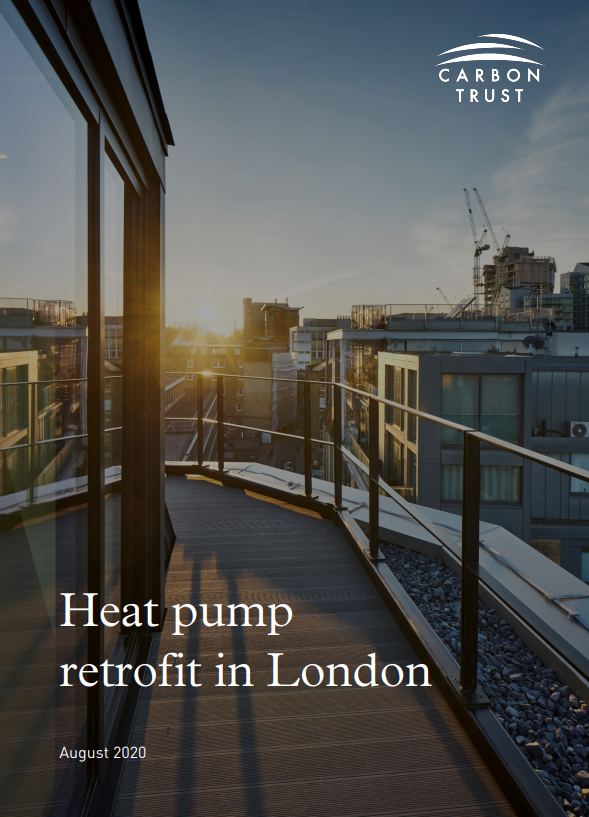This report provides guidance on the challenges and opportunities of retrofitting heat pumps into existing buildings in London. It also contains an action plan for scaling up energy efficiency measures and heat pump retrofit.
This report provides guidance on the challenges and opportunities of retrofitting heat pumps into existing buildings in London. It also contains an action plan for scaling up energy efficiency measures and heat pump retrofit.
 Decarbonising heat is London’s biggest challenge to achieving Net Zero emissions. Natural gas, used mainly for heating buildings and water, accounts for 37% of all greenhouse gas emissions in London. To achieve the Mayor’s Net Zero target by 2030, London will need to make a rapid transition from gas to low carbon heat solutions, the majority of which will be retrofitted into existing buildings.
Decarbonising heat is London’s biggest challenge to achieving Net Zero emissions. Natural gas, used mainly for heating buildings and water, accounts for 37% of all greenhouse gas emissions in London. To achieve the Mayor’s Net Zero target by 2030, London will need to make a rapid transition from gas to low carbon heat solutions, the majority of which will be retrofitted into existing buildings.
Heat pump systems have the potential to deliver immediate carbon emission savings. However, heat pumps are not a like-for-like replacement for gas boilers and good practice system design will be essential to their effective deployment.
The key over-arching messages of this report are that:
- Heat pumps are the primary technology choice for decarbonising heat in existing London buildings.
- Heat pump technology is varied, versatile and can work in all London building types.
- Heat pumps are not a like-for-like replacement for gas boilers or conventional electric heating and good practice system design is essential.
- Improved energy efficiency in buildings is a pre-requisite for heat pump retrofit at scale and will require significant investment.
- Flexibility of heat demand is essential for a Net Zero carbon energy system and can bring significant financial rewards at the individual building level.
- Based on current gas and electricity prices, heat pumps will reduce fuel bills compared to conventional electric heating but could increase fuel bills compared to gas unless paired with energy efficiency, best practice system design and flexible use of heat.
- The up-front cost of heat pumps is higher than traditional alternatives and many building types will require additional up-front financial support. However, the lifetime financial case for heat pump retrofit is already strong in some building types, such as electrically heated buildings, buildings with a high cooling demand and buildings that already require major renovations. These building types should be prioritised for heat pump retrofit.
End of Preview
